Farming on the Edge of Change
Published July 19, 2007, by the West Marin Citizen
Story and photos by Steve Quirt, UCCE Marin
Ten years ago you could drive from Two Rock to Dillon Beach through acres of dairy cows, cattle and sheep grazing on lush grasslands. Traditional commodity farming here stretches back to the war years when national demands for beef and wool replaced a diversified agriculture. Much has remained the same. But a closer look reveals something stirring up the status quo.
Today, that same drive to Dillon Beach showcases a renewal of diversified farming emerging from the pastures and alluvial valleys of West Marin. Food that was once shipped away to be distributed nationally is being transformed into delicious local fare, for locals to enjoy. Follow us on this ride.
The first farm you pass on the road to Dillon Beach is tucked up against the Coast Guard Training Center. 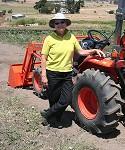

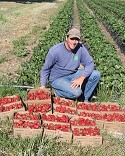
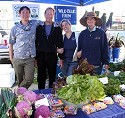
Rolling into Tomales you pass the old Cerini Ranch, now owned by John Williams and Ted Hall from Napa County, who plan on developing a state-the-art farmstead dairy and world-class cheese making facility. (Also underway in Marshall, Marcia Barinaga and Cory Goodman have begun construction on a farmstead sheep dairy and cheese plant).
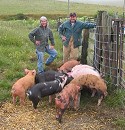
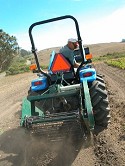

There's more that I won't reveal! Blueberries, strawberries and raspberries have been planted, and an apple orchard is planned for cider production. There are rumors of cheese and butter operations as well as artichokes and more row crops. The diversification of our farms is under way and the excitement is infectious as farmers begin to see new ways of reaching direct markets and getting local food to local people.
As eaters of this emerging bounty, we should be aware of the work, risk and sacrifice these pioneers are assuming. It's not easy to change an operation that is generations old. It's not easy to begin a long dreamed of farming operation coming from an urban background. It's not easy to sustain a profit and remain farming with the current climate of regulatory and environmental scrutiny. These adventurers deserve our appreciation and support. Find the produce and farm products. Purchase freely and don't complain about the price. (Find local products at www.growninmarin.org). The prices reflect the true cost of the food. The attention and vision of these producers is part of the food. Honor it. Enjoy it. These farmers are truly farming on the edge of change.
An important part of the mission of UC Cooperative Extension (CE) is nurturing and fostering the diversification of our farms and ranches. In 1996 CE hosted a diversification workshop that inspired Randi LaFranchi, from Nicasio, to add 5 acres of vegetables to his dairy operation. The idea for an organic producers association was formed by the West Marin Growers Group with Janet Brown, Peter Worsley, Peter Martinelli, and others, and the seeds for a county organic certification program were planted.
Today, CE continues to put on farm diversification workshops, publishes Grown in Marin, a bimonthly newsletter, and continues to expand its website, www.growninmarin.org, all to support farmers and ranchers on their road to sustainability.



